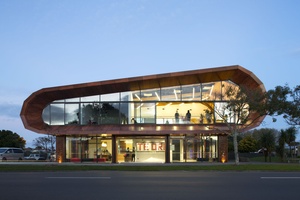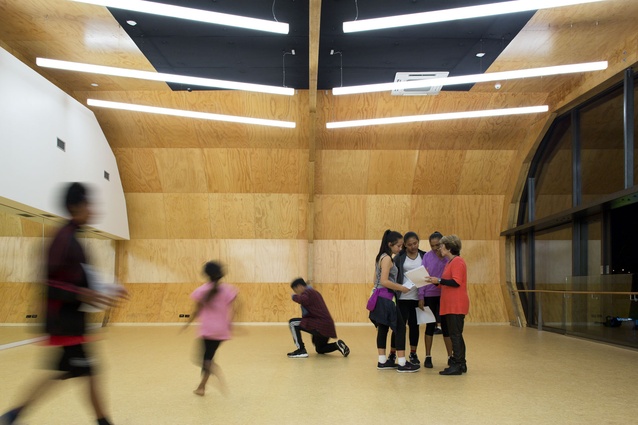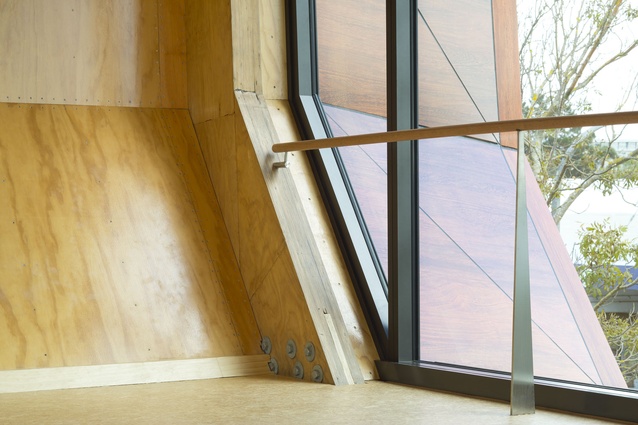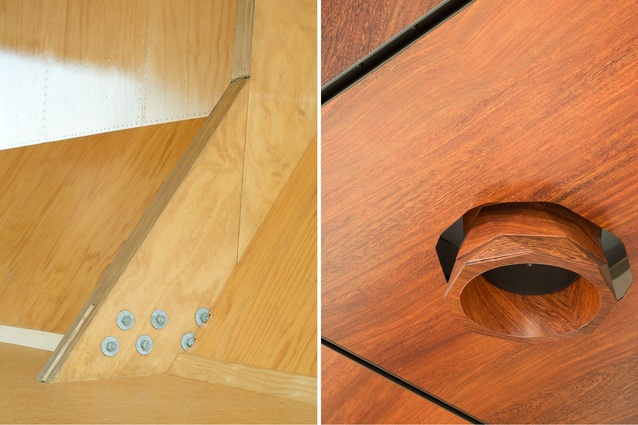Te Oro
Take a drive through the east-Auckland suburb of Glen Innes and the first thing you’re likely to notice is the amount of construction work being undertaken. While the building activity is primarily residential, there is a rather significant civic project changing the landscape of the town.
Befitting its status as a building of note, Te Oro a new music and arts centre for the young people of Glen Innes lies at the heart of the main street, on a site adjoining three other key facilities – Ruapotaka Marae, the library and a community hall, all of which will access a shared landscaped space.
“Te Oro has been a long time coming,” says Auckland Council’s senior project manager major and special projects, Alasdair Nelson. “A music and arts centre for young people has been an aspiration of the Glen Innes community for many years; an identified need for structured activities for young people, preferably in the form of a purpose-built centre, was first documented as early as 1995, and further community surveys, research and engagement have reinforced the concept of a youth-focused music and arts centre as a priority for the area.

“The brief for Te Oro was to create a vibrant, state-of-the-art, landmark building in the Glen Innes town centre that would incorporate and reflect the diversity, history, arts and cultural aspirations of the local community and capture the community’s aspirations for the future of the local area.”
Archimedia principal Lindsay Mackie says the town-centre site also has historical importance to the local mana whenua, featuring in their oral traditions. “Ruapotaka Marae is strongly associated with the legend of Parehuia, which references a grove of karaka trees on nearby Taurere-Mt Taylor.”
These local histories, divulged through a programme of open consultation where the active local community was empowered to participate in design decision-making, also resonated with the area’s colonial name – Glen Innes, which, from its Gaelic origins, has allusions to islands of space within a grove of trees.
“From these recurring themes, the building was conceptualised as a natural arboreal canopy, under which learning and creativity could occur, with interiors strongly linked to the natural world through the use of glazing and timber.”
The resulting building comprises three pavilions interlinked by two glazed transitional areas that allow natural light to filter into the interior, much as it does through a forest’s leaf canopy.

“Again, the pavilion concept was informed by the recurring metaphor and is composed of a tier of ground terraces, a floating superstructure – representing an abstract canopy of foliage – and a transparent space between these elements within which human activity can occur,” says Mackie. The three pavilions also reference the Māori creation story in which Tane journeys to the uppermost realm and receives the three baskets of knowledge from Io-Matua-Kore, before returning to Earth and creating humankind.
Te Oro’s interior layout includes a 200-seat performance space – which opens onto a north-facing terraced area, becoming a stage for outdoor performances – and workshop and teaching spaces, all located on the ground level. On the upper level, the three pavilions together house a dance studio, a music classroom, recording studios, a digital editing suite, a beat-making studio, and a bone-carving and jewellery workshop, as well as visual arts classrooms. Spaces within the eastern-most pavilion open onto a terrace on the ground floor and a deck on the upper level.
Stylistically, the interior continues the arboreal theme, with the design of the ceiling plane and skylights evocative of a leaf canopy highlighted by the diagonal placement of the ceiling lights.
“The resulting diamond patterns represent the Pacific Islands notion of binding – unifying the disciplines of traditional and contemporary visual art, music and performance,” says local artist Martin Leung-Wai.
Perhaps the strongest visual expression of this notion is the tukutuku panel located in the lobby. Created by Alt Group in partnership with Ngāti Pāoa, with the endorsement of Ngāti Whātua Ōrākei and Ngāi Tai Ki Tāmaki, the panel is an artistic expression of Te Oro’s visual identity.

The physical process of creating tukutuku, as well as the act of binding, coming together, and the reciprocity of people working together, reflects the vision and goals established in the community charter for the centre. The repeated triangular pattern, tapatoru, in the first instance, is a reference to Maungarei-Mt Wellington but also acknowledges the dual aspects of the past and the future reverberating optically through the pattern.
Based at Ruapotaka Marae, Lorna Rikihana and Kelly Dixon from Ngāti Pāoa, Bernie Papa and Tanya White from Ngāti Whātua, and Tessa Harris and Huhana Turei from Ngāi Tai Ki Tāmaki were the weavers involved in the project, creating the tukutuku over a two-month period.
The weaving motif is continued in the centre’s performance space, where the concrete blocks that make up the end walls have been laid on a repeating, slightly oblique angle, which, when viewed from the middle distance, creates a woven pattern. This pattern then shifts and changes depending upon the viewer’s perspective, underscoring the personal response we all have towards art.
Perspective shifts again around another of the centre’s installations – a series of six ‘sound sites’ located around the perimeter of the building. The sites, produced by local iwi and community artists, were designed to commemorate the collaboration and engagement of mana whenua iwi and the wider Glen Innes community in the design and ownership of Te Oro. These sites provide intimate spaces around the building perimeter for listening, reflection and celebration of the collective richness of local culture and history – much like the centre itself.
For more on the construction of Te Oro see here. Archimedia are behind the celebrated Auckland Art Gallery.

















